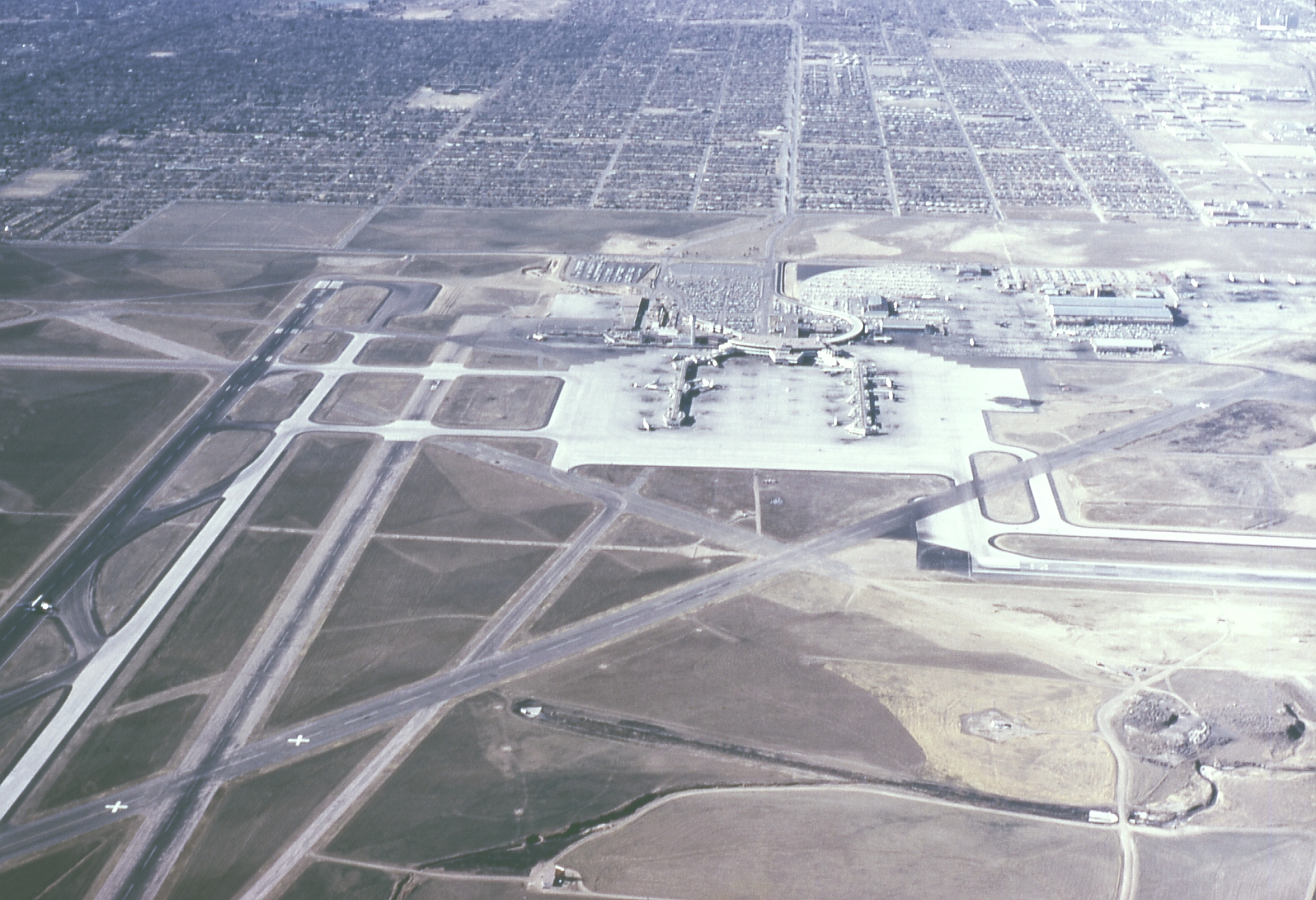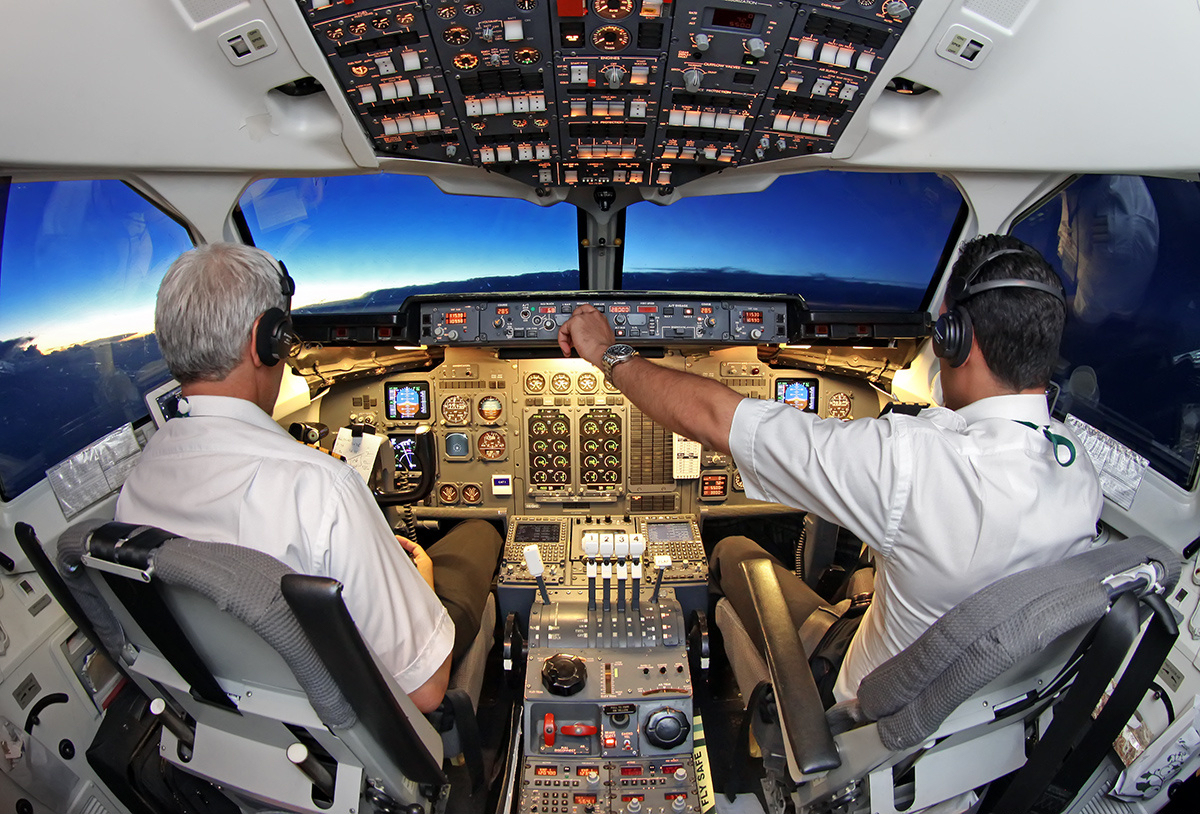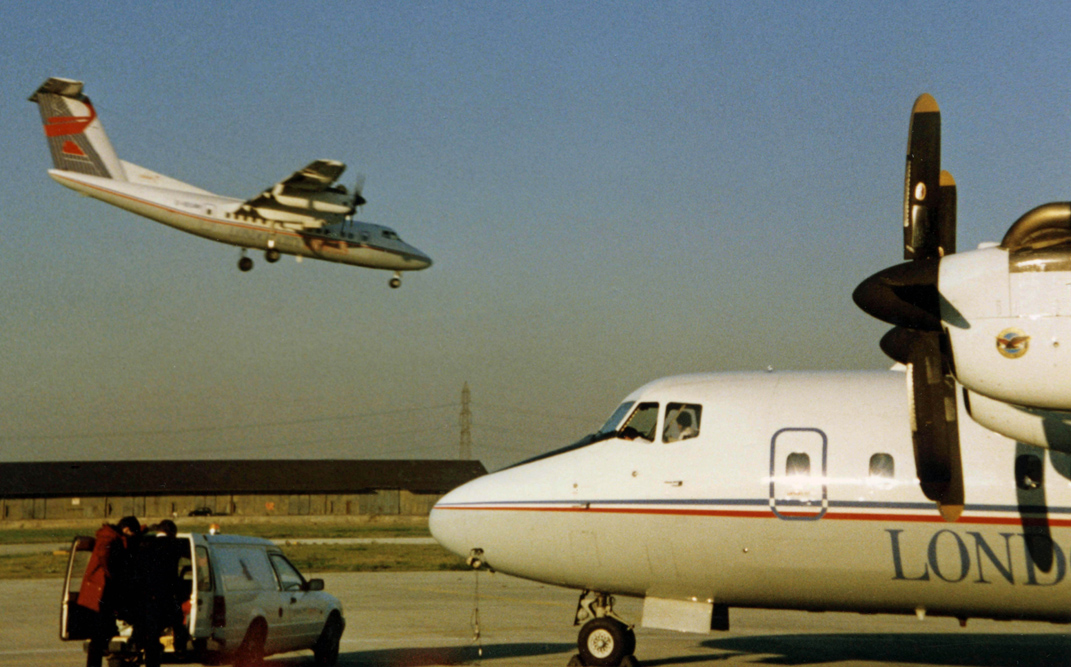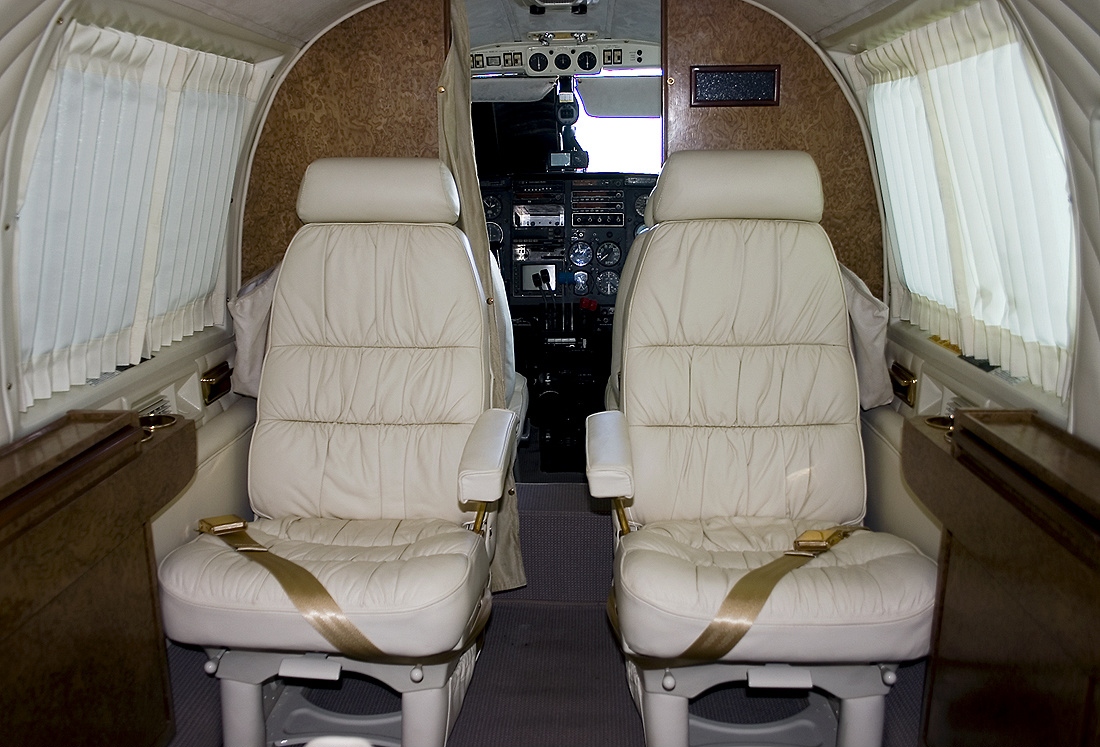|
Aspen Airways
Aspen Airways was an airline carrier and regional affiliate of United Express and based in Hangar 5 in Stapleton International Airport in Denver, Colorado. Aspen ceased operations on April 1, 1990, when separate portions of the airline were acquired by Mesa Airlines and Air Wisconsin Services, Inc. History Aspen Airways was named after the aspen tree and not the town of Aspen, Colorado, where it was originally based before moving its headquarters to Stapleton International Airport (DEN) in Denver. Aspen Airways was founded in 1952 by Walter Paepcke, as the flight department of the Aspen Institute of Humanistic Studies. It was created to fly personnel between Aspen (ASE) and Denver (DEN). The airline's first aircraft were surplus Douglas DC-3s. In 1963, Aspen Airways was purchased by J.W. "Bill" Ringsby. During the late 1960s, Aspen operated a Convair 240 prop aircraft leased from Alaska Airlines and by 1970 was operating four Convair 340/Convair 440 prop airliners which w ... [...More Info...] [...Related Items...] OR: [Wikipedia] [Google] [Baidu] |
Stapleton International Airport
Stapleton International Airport was a major airport in the western United States, and the primary airport of Denver, Colorado, from 1929 to 1995. It was a hub for Continental Airlines, the original Frontier Airlines, People Express, United Airlines, and Western Airlines. Other airlines with smaller operations at Stapleton included Aspen Airways, Frontier Airlines, and Rocky Mountain Airways, all three being based in Denver at the time. Stapleton International Airport was replaced by Denver International Airport in 1995; it was closed and the property redeveloped as the commercial and residential neighborhood of Central Park, which was named Stapleton until 2020. The former Stapleton International Airport codes were transferred to the new airport, which continues to use them today. History Prewar and wartime years (1929–1945) Stapleton opened in 1929 as Denver Municipal Airport on October 17. The development of the airport was spearheaded by Denver mayor Benjami ... [...More Info...] [...Related Items...] OR: [Wikipedia] [Google] [Baidu] |
Convair 440
The Convair CV-240 is an American airliner that Convair manufactured from 1947 to 1954, initially as a possible replacement for the ubiquitous Douglas DC-3. Featuring a more modern design with cabin pressurization, the 240 series made some inroads as a commercial airliner, and had a long development cycle that produced various civil and military variants. Though reduced in numbers by attrition, various forms of the "Convairliners" continue to fly in the 21st century. Design and development The design began with a requirement by American Airlines for an airliner to replace its Douglas DC-3s. Convair's original design, the unpressurised Model 110, was a twin-engine, low-wing monoplane of all-metal construction, with 30 seats. It was powered by Pratt & Whitney R-2800 Double Wasp radial engines. It had a tricycle landing gear, and a ventral airstair for passenger boarding. The prototype Model 110, registration NX90653, first flew on July 8, 1946. By this time, American Airlines h ... [...More Info...] [...Related Items...] OR: [Wikipedia] [Google] [Baidu] |
Jet Airliner
A jet airliner or jetliner is an airliner powered by jet engines (passenger jet aircraft). Airliners usually have two or four jet engines; three-engined designs were popular in the 1970s but are less common today. Airliners are commonly classified as either the large wide-body aircraft, medium narrow-body aircraft and smaller regional jet. Most airliners today are powered by jet engines, because they are capable of safely operating at high speeds and generate sufficient thrust to power large-capacity aircraft. The first jetliners, introduced in the 1950s, used the simpler turbojet engine; these were quickly supplanted by designs using turbofans, which are quieter and more fuel-efficient. History Early history The first airliners with turbojet propulsion were experimental conversions of the Avro Lancastrian piston-engined airliner, which were flown with several types of early jet engine, including the de Havilland Ghost and the Rolls-Royce Nene. They retained the two inboa ... [...More Info...] [...Related Items...] OR: [Wikipedia] [Google] [Baidu] |
BAe 146-100
The British Aerospace 146 (also BAe 146) is a short-haul and regional airliner that was manufactured in the United Kingdom by British Aerospace, later part of BAE Systems. Production ran from 1983 until 2001. Manufacture by Avro International Aerospace of an improved version known as the Avro RJ began in 1992. A further-improved version with new engines, the Avro RJX, was announced in 1997, but only two prototypes and one production aircraft were built before production ceased in 2001. With 387 aircraft produced, the Avro RJ/BAe 146 is the most successful British civil jet airliner programme. The BAe 146/Avro RJ is a high-wing cantilever monoplane with a T-tail. It has four geared turbofan engines mounted on pylons underneath the wings, and has a retractable tricycle landing gear. The aircraft operates very quietly, and as such has been marketed under the name Whisperjet. It sees wide usage at small, city-based airports such as London City Airport. In its primary role, it serve ... [...More Info...] [...Related Items...] OR: [Wikipedia] [Google] [Baidu] |
British Aerospace
British Aerospace plc (BAe) was a British aircraft, munitions and defence-systems manufacturer. Its head office was at Warwick House in the Farnborough Aerospace Centre in Farnborough, Hampshire. Formed in 1977, in 1999 it purchased Marconi Electronic Systems, the defence electronics and naval shipbuilding subsidiary of the General Electric Company plc, to form BAE Systems. History Formation and privatisation The company has its origins in the Aircraft and Shipbuilding Industries Act 1977, which called for the nationalisation and merger of the British Aircraft Corporation, Hawker Siddeley Aviation, Hawker Siddeley Dynamics and Scottish Aviation. On 29 April 1977, the new entity was formed in the United Kingdom as a statutory corporation. Under the provisions of the ''British Aerospace Act 1980'' on 1 January the statutory corporation was transferred to a limited company, which then re-registered as a public limited company (plc), under the name "British Aerospace Public ... [...More Info...] [...Related Items...] OR: [Wikipedia] [Google] [Baidu] |
De Havilland Canada Dash 7
The de Havilland Canada DHC-7, popularly known as the Dash 7, is a turboprop-powered regional airliner with short take-off and landing (STOL) performance. It first flew in 1975 and remained in production until 1988 when the parent company, de Havilland Canada, was purchased by Boeing in 1986 and later sold to Bombardier. In 2006 Bombardier sold the type certificate for the aircraft design to Victoria-based manufacturer Viking Air. Design and development In the 1960s, de Havilland Canada was already well known worldwide for their series of high-performance STOL aircraft, notably the very popular DHC-2 Beaver and DHC-6 Twin Otter. However, these aircraft were generally fairly small and served outlying routes, as opposed to the busier regional airliner routes which were already well served by larger, higher-performance turboprop aircraft such as the Fokker F27, Fairchild F-27, Convair 580, Convair 600, and Hawker Siddeley 748. The de Havilland Canada company personne ... [...More Info...] [...Related Items...] OR: [Wikipedia] [Google] [Baidu] |
De Havilland Canada DHC-7
The de Havilland Canada DHC-7, popularly known as the Dash 7, is a turboprop-powered regional airliner with short take-off and landing (STOL) performance. It first flew in 1975 and remained in production until 1988 when the parent company, de Havilland Canada, was purchased by Boeing in 1986 and later sold to Bombardier. In 2006 Bombardier sold the type certificate for the aircraft design to Victoria-based manufacturer Viking Air. Design and development In the 1960s, de Havilland Canada was already well known worldwide for their series of high-performance STOL aircraft, notably the very popular DHC-2 Beaver and DHC-6 Twin Otter. However, these aircraft were generally fairly small and served outlying routes, as opposed to the busier regional airliner routes which were already well served by larger, higher-performance turboprop aircraft such as the Fokker F27, Fairchild F-27, Convair 580, Convair 600, and Hawker Siddeley 748. The de Havilland Canada company personnel felt t ... [...More Info...] [...Related Items...] OR: [Wikipedia] [Google] [Baidu] |
De Havilland Canada DHC-6 Twin Otter
The de Havilland Canada DHC-6 Twin Otter is a Canadian STOL (Short Takeoff and Landing) utility aircraft developed by de Havilland Canada, which produced the aircraft from 1965 to 1988; Viking Air purchased the type certificate, then restarted production in 2008 before re-adopting the DHC name in 2022. The aircraft's fixed tricycle undercarriage, STOL capabilities, twin turboprop engines and high rate of climb have made it a successful commuter airliner, typically seating 18-20 passengers, as well as a cargo and medical evacuation aircraft. In addition, the Twin Otter has been popular with commercial skydiving operations, and is used by the United States Army Parachute Team and the United States Air Force's 98th Flying Training Squadron. Design and development Development of the aircraft began in 1964, with the first flight on May 20, 1965. A twin-engine replacement for the single-engine DHC-3 Otter retaining DHC's STOL qualities, its design features included double- ... [...More Info...] [...Related Items...] OR: [Wikipedia] [Google] [Baidu] |
Rocky Mountain Airways
Rocky Mountain Airways was an American commuter airline headquartered in Hangar No. 6 of Stapleton International Airport in Denver, Colorado. It was sold to Texas Air Corporation/Continental Airlines in 1986 and was operated as a Continental Express subsidiary until its operations were merged with Britt Airways in 1991. The airline flew from Denver's Stapleton International Airport to a variety of destinations in Colorado, Nebraska and Wyoming. The airline operated out of the old commuter terminal in Concourse A at Stapleton. History It was established as Vail Airways in 1963 by Gordon Autry. The airline adopted "Rocky Mountain Airways" in 1968, shortly after service to Aspen was introduced. Vail Airways began operations with Cessna 310 piston twin aircraft, followed by the Rockwell Aero Commander piston twin. In 1969, Rocky Mountain Airways expanded with the 19 passenger de Havilland Canada DHC-6 Twin Otter twin engine turboprop. On February 3, 1978, Rocky Mountain Airways too ... [...More Info...] [...Related Items...] OR: [Wikipedia] [Google] [Baidu] |
Aero Commander
Aero Commander was an aircraft manufacturer formed in 1944. In subsequent years, it became a subsidiary of Rockwell International and Gulfstream Aerospace. The company ceased aircraft production in 1986. History Aero was formed in Culver City, California, in 1944 to design and manufacture a light twin-engined transport aircraft. Ted Smith, a former project engineer at Douglas Aircraft Company, assembled a team of 14 engineers to design what would be the Aero Commander. Preliminary design was completed in 1946. The first prototype took flight on April 23, 1948, and was certified by the Civil Aeronautics Administration (CAA) in June, 1950. Three men funded the company's early efforts: Philadelphia attorney George Pew and Oklahoma City brothers William and Rufus Travis Amis. In September 1950, it became the Aero Design and Engineering Company of Oklahoma. Its facilities consisted of an aircraft hangar and manufacturing facility located at what is now Wiley Post Airport near Oklah ... [...More Info...] [...Related Items...] OR: [Wikipedia] [Google] [Baidu] |
Piper Navajo
The Piper PA-31 Navajo is a family of cabin-class, twin-engined aircraft designed and built by Piper Aircraft for the general aviation market, most using Lycoming engines. It was also license-built in a number of Latin America Latin America or * french: Amérique Latine, link=no * ht, Amerik Latin, link=no * pt, América Latina, link=no, name=a, sometimes referred to as LatAm is a large cultural region in the Americas where Romance languages — languages derived ...n countries. Targeted at small-scale cargo airline, cargo and regional airline, feeder liner operations and the corporate market, the aircraft was a success. It continues to prove a popular choice, but due to greatly decreased demand across the general aviation sector in the 1980s, production of the PA-31 ceased in 1984. Design and development At the request of company founder William T. Piper, Piper began development of a six- to eight-seat twin-engined corporate and commuter transport aircraft in ... [...More Info...] [...Related Items...] OR: [Wikipedia] [Google] [Baidu] |
De Havilland Heron
The de Havilland DH.114 Heron is a small propeller-driven British airliner that first flew on 10 May 1950. It was a development of the twin-engine de Havilland Dove, with a stretched fuselage and two more engines. It was designed as a rugged, conventional low-wing monoplane with tricycle undercarriage that could be used on regional and commuter routes. A total of 149 were built, and it was also exported to about 30 countries. Herons later formed the basis for various conversions, such as the Riley Turbo Skyliner and the Saunders ST-27 and ST-28. Design and development In the closing stages of the Second World War, the aircraft manufacturer de Havilland began development of a new small twin-engined passenger aircraft, the DH 104 Dove, intended as a replacement for the earlier Dragon Rapide and which soon proved to be successful. As a further development, the company basically enlarged the Dove; the fuselage was lengthened to make room for more passengers or freight, an ... [...More Info...] [...Related Items...] OR: [Wikipedia] [Google] [Baidu] |







.jpg)



